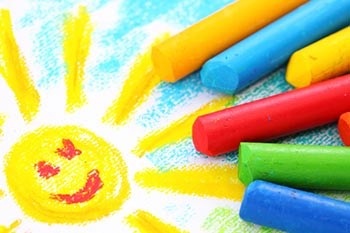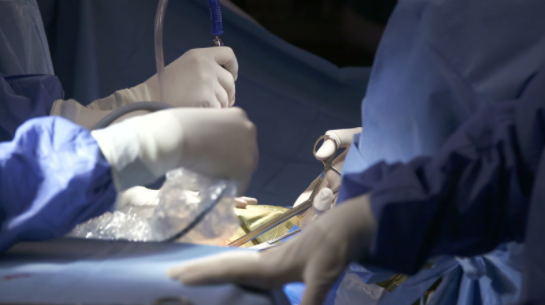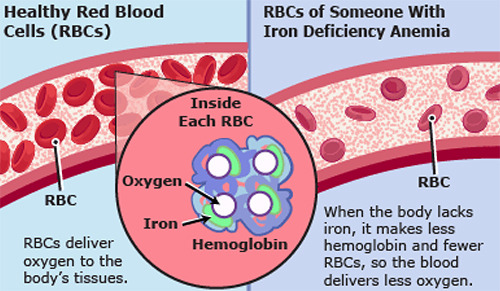Milestones of child development
- 26, August 2012
- In Tips
Your baby is growing up: first smile; first steps; first words. All babies develop on their own timelines but what are the milestones to look out for?
There's more to tracking your baby's development than logging height and weight. You can look for signs of emerging motor and language skills in the very first months of your baby's life.We have compiled an overview of childhood development from birth to five years of age.
This information is presented to help parents understand what to expect from their child.

It's a good idea for parents to watch for these early childhood milestones, along with the more obvious "firsts" such as walking and talking. Just be careful about comparing your child with peers or older siblings.
Remember that each child is an individual and there's a wide range for when children achieve a particular milestone. For example, children walk as early as 9 months or as late as 14 months. It is important to keep in mind that the time frames presented are averages and some children may achieve various developmental milestones earlier or later than the average but still be within the normal range
Spotting Development Delays
So, how can you tell the difference between a child who is just taking his or her time and one who has a true developmental delay? A developmental delay is when a child does not reach a milestone by the upper range of normal. Even though babies develop at their own pace, every child should do certain tasks by a certain age. These tasks fall into five main categories:
Remember, a child can stray from this timeline and still be within the range of normality, but it's best to always discuss any concerns with your paediatrician.
TIMELINE OF CHILDHOOD MILESTONES
| Age | DEVELOPMENT MILESTONES |
|---|---|
| Birth to 1 Month | Can make basic distinctions in vision, hearing, smelling, tasting, touch, temperature, and perception of pain. |
| 2 Months to 3 Months | Smiles at the sound of your voice and can control eye muscles – baby follows you with their eyes as you move around in a room. Raises head and chest when lying on stomach. Grasps objects. Smiles at other people and visually fixates at a face, may be soothed by rocking. |
| 4 Months to 6 Months | Can control steady head and arm movements, babbles, laughs, and tries to imitate sounds. Recognizes his mother. Distinguishes between familiar persons and strangers, no longer smiles indiscriminately. Expects feeding, dressing, and bathing. Rolls from back to stomach and stomach to back. Moves objects from hand to hand. |
| 7 Months to 9 Months | Finds partially hidden objects. Protests separation from mother. Enjoys “peek-a-boo”. Control of upper body and hands, sits without support, crawls about, babbles "mama" and "dada". |
| 10 Months to 1 Year | Control of legs and feet, stands, creeps, apposition of thumb and fore-finger. Walks with or without support. Says one or two words, enjoys imitating sounds and people. Responds to simple commands like giving and taking objects, and responds to own name. Waves bye-bye and understands “No!” |
| 1 Year to 1 ½ Years | Walks independently and creeps up stairs. Shows interest in feeding themselves and drinks from a cup. Obeys limited commands and can say at least 15 words. Interested in his mirror image and points to body parts. Can make lines on paper with crayon. |
| 1 ½ Years to 2 Years | Runs and jumps and kicks a ball. Speaks in two-word sentences and has vocabulary of more than 200 words. Follows simple instructions. Begins make-believe play. Capable of bowel and bladder control. |
| 2 Years to 3 Years | Climbs well, jumps off a step, rides a tricycle and uses crayons. Speaks in multiword sentences and uses “I” “me” “you”. Copies parents’ actions and has a fear of separation from parents which can be seen through dependent, clinging behaviour. Resists parental demand and gives orders. Rigid insistence on sameness of routine. Inability to make decisions. Sorts objects by shape and colour. Possessive about toys, enjoys playing alongside another child. |
| 3 Years to 4 Years | Gets along with people outside the family, and imitated parents. Draws circles and squares and rides a tricycle, stands on one leg, jumps up and down, draws a circle and a cross. Likes to share, uses “we” and will cooperate with other children while playing. Beginning of identification with same-sex parent, practices gender-role activities. Intense curiosity & interest in other children’s bodies. |
| 4 Years to 5 Years | Mature motor control, skips, broad jumps, dresses themselves, copies a square and a triangle. Tells name and address. Talks clearly, uses adult speech sounds, has mastered basic grammar, relates a story, knows over 2,000 words and counts 10 or more objects. Prefers to play with other children, becomes competitive & prefers gender-appropriate activities. |
If your Child Seems Behind
If your child doesn't match up to the timeline, don't panic. More often than not, these are minor problems, often there's not even a delay. Sometimes a parent just isn't giving the child opportunities. For example, a baby may not sit alone because he's always being held, rather than having time on the floor.
If there is a more serious reason for the delay, early intervention not only improves the child's functioning, but improves the relationship between parent and child and the parent's understanding of the condition. All in all, it appears that when an intervention is in place there are benefits to the child and society in the long term, such as better performance in school.
How Parents Can Help
Parents can follow the following tips to encourage your child's development:
Gross Motor Skills
- Place infants on their tummies while awake to develop neck and back muscles
- Create a safe home environment and put babies on the floor to explore
- Give older children time outside where they can run and jump.
Fine Motor Skills
- Provide toys with different textures that encourage babies to explore with their fingers
- Provide age-appropriate puzzles, blocks, paper and crayons
- Encourage babies to feed themselves
Language Skills
- Play music for newborns to stimulate hearing
- Talk to your child
- Read to your child
- Name objects as you point to pictures in a book
Social Interaction
- Laugh and smile with your baby
- Limit television - rather play with your child
Social interaction is more important than we've realised in the past. Don't leave children by themselves. Being engaged with your child on a daily basis is very important.
Sources
WebMD,Child Development Institute
Electronic Scheme Forms
Broker Appointment Forms
Recent Posts





